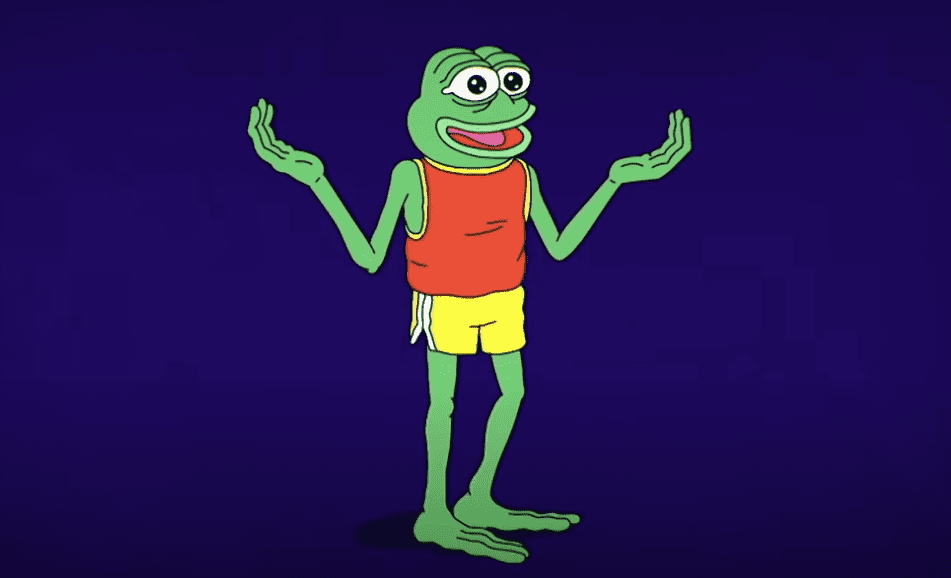An Ethereum based non-fungible token project named Sad Frogs District, based on the controversial Pepe the Frog meme, has been delisted from the OpenSea marketplace after a Digital Millennium Copyright Act notice was filed by the character’s creator, Matt Furie.
OpenSea announced the delisting of the 7,000 minted images in the project on its Discord channel yesterday, much to the anger of many in the community who had already invested US$4 million in the project.
“We know this is likely disappointing, and we don’t enjoy doing it — that said, we must comply with lawful takedown requests,” said one of OpenSea’s Discord moderators.
The company has said its official position is to follow whatever is legally required, and the creators of Sad Frogs District are welcome to file their own counter-DMCA. DMCAs are filed by owners of copyrighted material when they believe their intellectual property is being used unlawfully.
The move is the latest attempt by Furie to reclaim ownership of Pepe, which from its innocent origins in a comic book in 2005 became a hate symbol used by the U.S. far-right, a pro-democracy symbol in Hong Kong, and present in other iconography. The case raises interesting questions about validity in the NFT marketplace.
Ribbit, ribbit
Pepe began life in a comic series centered on four anthropomorphic animals living a bohemian lifestyle — until one issue featured a single panel showing Pepe saying, “Feels good, man” in response to a question from another character. For some reason, the image of the smiling frog and the catchphrase caught on and began circulating on the internet as a meme expressing generally positive news or sentiments.
Over time, some internet users appropriated the meme, slowly morphing it into a symbol of anti-Semitism and bigotry. U.S. anti-racism group the Anti-Defamation League listed Pepe as a hate symbol for those reasons in 2016, and has partnered with Furie in an attempt to reclaim the character from its uglier connotations.
In Asia however, the character took on a completely different meaning. In mainland China, Pepe is an apolitical emoticon, similar to any other, but it became a pro-democracy mascot during the pro-democracy protests in Hong Kong in 2019. A full history of Pepe and Furie’s attempts to reclaim the character is recounted in the 2020 documentary “Feels Good Man.”
The term non-fungible refers to something completely unique and non-transferable, even with another version of itself. By encoding unique digital assets as NFT’s — a process called “minting” — it is possible to verify that an asset is unique and trace its ownership in an online world where material can be copied an infinite number of times.
But what if the original digital copy of an asset is removed from the internet altogether? This is an issue Marta Belcher of the Filecoin Foundation and Protocol Labs raised when speaking with Forkast.News in June.
Protocol Labs is the lead developer of the InterPlanetary File System, a peer-to-peer network for storing and sharing data in a distributed system. That sets it apart from the centralized internet we use today, on which data is stored in a centralized manner, which means that data is transitory, posing a risk to investors in NFTs.
“It really doesn’t make sense to store NFTs on the traditional web,” Belcher said. “You just can’t count on NFTs still being there in X amount of time. It’s one of the big use cases right now for [the InterPlanetary File System]. People say right now, ‘If it’s not on IPFS, it’s not your NFT.’”
Market momentum
Despite uncertainties around ownership, the NFT market exploded this year, most visibly when a bidder paid US$69 million for an NFT of a piece entitled “Everydays: the First 5000 Days,” by digital artist Beeple. The U.S. National Basketball Association released a series of NFTs of exciting plays named “Hot Shots,” many of which ended up selling for thousands of dollars, such as one featuring a dunk by LeBron James that sold for US$208,000 in February.
Buying a licensed NBA Hot Shot is one thing, but as seen with the Sad Frogs District, establishing the true ownership of an NFT is not always a clear-cut process. A photo of a Tibetan woman carrying a handful of crypto mining rigs in Chinese business news outlet Caixin recently went viral, leading to dozens of NFTs of the picture being minted without the knowledge or consent of the photographer or the subject.
In another example, Ze Han, a brother of deceased artist Qing Han, also known as Qinni, was informed after his sister’s death in February 2020 that fraudsters were stealing her art and minting NFTs of it. In an interview with tech outlet Wired, Ze explained that he felt powerless to stop NFTs from proliferating across many different NFT marketplaces.
Although some marketplaces were responsive to his requests for the pieces to be removed, the number of NFTs and marketplaces Qinni’s work was appearing on was too great for Ze to address them all.
The Sad Frogs District case differs, however. The 7,000 images were officially verified by OpenSea prior to their minting, as the individual works were created by artists who put their names to them. But in this instance, Furie was able to prove to the DCMA office he was the original creator, a fact he has had to prove time and again as he tries to reclaim the image from being one of hate.
The delisting has left investors holding worthless NFTs, but has returned some of Furie’s control over his creation.





